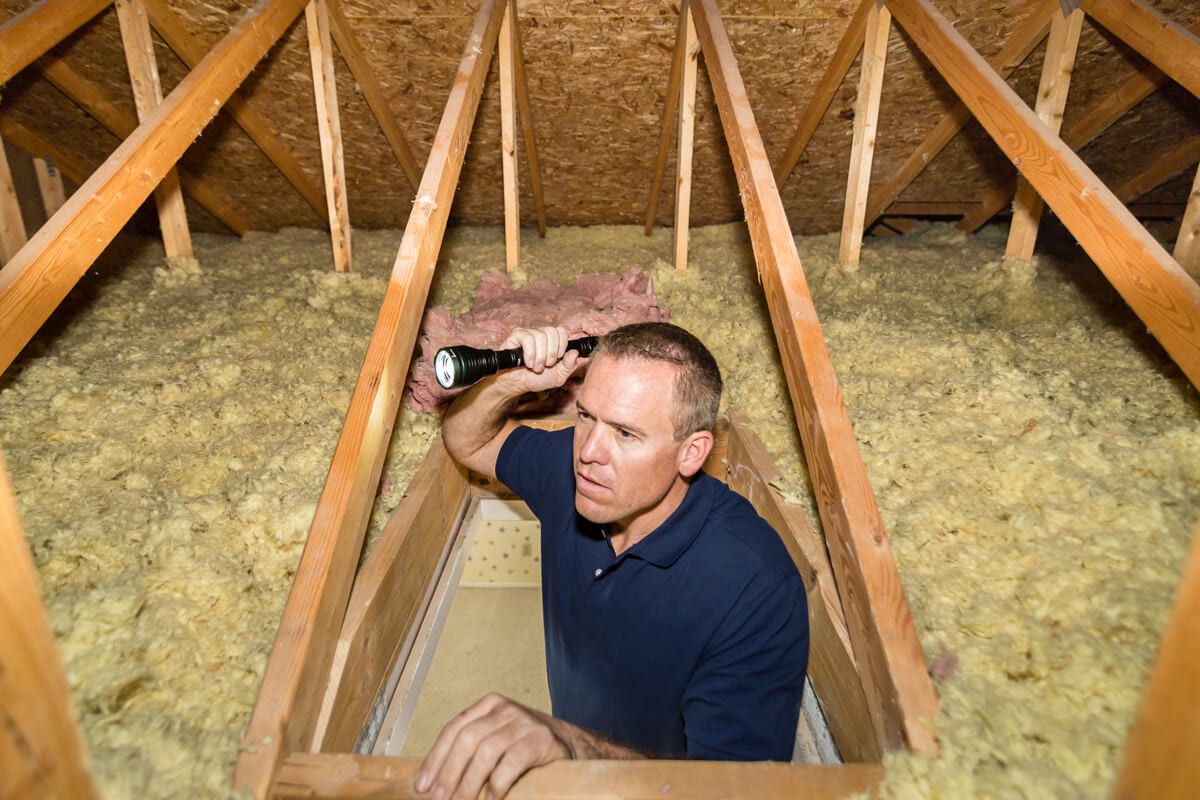
What does a typical home inspection cover?
By now you should know that a home inspection is a visual inspection of your home & major systems.
It is meant to give you a comprehensive report at that moment in time of areas that require fixing or further evaluation by a specialist.
It is also a helpful tool in negotiations with the seller on who pays for repairs.
What's included in most home inspections?
Here is the short answer:
- Exterior, foundation & structural components
- Roof, gutters & downspouts
- Attic, insulation & ventilation
- Electrical systems
- Plumbing
- Heating & Cooling systems
- Fireplace
- Interior rooms & spaces
The details of what's typically inspected
Exterior, Foundation & Structural Components (also could include basement, crawlspace)
This section will generally include:
- Description of structure, foundation, floors, walls & ceilings
- Condition of the visible elements such as foundation walls, framing, slabs, posts, beams, joists, etc.
- Indications of moisture or water penetration
- Land grading around the home, walkways, steps, driveways, decks, patios, retaining walls, etc.
Roof, Gutters & Downspouts
This section will generally include:
- Description of roofing materials, drainage systems, & ventilation
- Flashings, soffits & fascias
- Skylights, Chimneys, & any roof penetrations
Inspectors aren’t required to climb on the roof to inspect, but many will if it is easily accessible and safe.
Attic, Insulation & Ventilation
This section will generally include:
- Presence of attic insulation and approximate depth (R-value)
- Any evidence of water intrusion
- Kitchen, bathroom, & laundry exhaust systems
- Ventilation of unfinished spaces
There must be sufficient headroom for inspectors to enter attic spaces or they may not be able to inspect.
Electrical
This section will generally include:
- Location of main sub-panels, amperage rating, wiring method
- Presence or absence of smoke alarms & carbon monoxide detectors
- Inspection of technical aspects – service drop, entrance conductors, cables, disconnects, grounding, over-current protection devices, electric meter & base, etc.
- Verifying operation of a representative number of switches, fixtures & receptacles
Inspection of GFCI (Ground Fault Circuit Interrupters) receptacles using a GFCI tester
Inspectors are not required to test every outlet, move furniture or appliances, or test ancillary items like burglar alarms, timers, etc.
Plumbing
This section will generally include:
- Description of the interior water supply, drain, waste & vent piping materials
- Water heater energy source, approximate age, condition, etc.
- Location of the main water & fuel supply shut-off valves
- Operation & functional flow of fixtures & faucets
- Testing of waste lines & drain pumps
Heating & Cooling (HVAC)
This section will generally include:
- Inspection of HVAC (condition, age) & distribution systems (ductwork, radiant, etc)
- Description of energy & fuel sources
- Location & operation of thermostat
- Inspection of vent systems, flues or chimneys
- Operation of systems using readily accessible controls
Fireplaces
This section will generally include:
- Inspection of fuel-burning fireplaces, stoves & inserts
- Operation of dampers, accessories & components
- Chimneys & vent systems
- Evidence of damage or deterioration of hearth or chambers
Inspectors generally aren’t required to operate gas fireplace inserts, light pilot flames or inspect interior of chimney or flues.
Interior (Garage, Doors, Windows, Appliances)
This section will generally include:
- Inspection of walls, ceilings, floors, steps, stairways & railings
- Inspection of countertops, cabinets, doors, & windows
- Operation of garage door and opener operators
- Operation of built-in appliances (oven, range, microwave, dishwasher, garbage disposal)
Inspectors are not required to inspect all household appliances or move carpets, furniture, etc. to inspect concealed flooring.
What isn't covered in a home inspection?
This will depend on your region and home inspector. Some inspectors include these add-ons in their offerings as a package.
If any of these apply to you, ask your home inspector if they offer the following add-ons:
- Pest/termite inspection
- Pool inspection
- Radon testing
- Mold testing
- Air quality testing
- Lead paint testing
- Sewer scope
Each state & inspector are different
What is covered in a typical home inspection is largely dictated by the home inspector’s state standards and/or the 2 main associations that most inspectors belong to:
InterNACHI (International Association of Certified Home Inspectors)
ASHI (American Society of Home Inspectors)
Each organization (and in some cases state licensing board) has their own Standards of Practice (SOP) that covers what their home inspectors are required and not required to inspect.
There are slight nuances between each, but all have very thorough, similar standards for which their home inspectors must adhere to.
If there are any questions as to what’s covered, definitely ask your home inspector before signing the inspection agreement so there are no surprises.
%20(2).png?width=495&height=175&name=Untitled%20(495%20%C3%97%20175%20px)%20(2).png)
